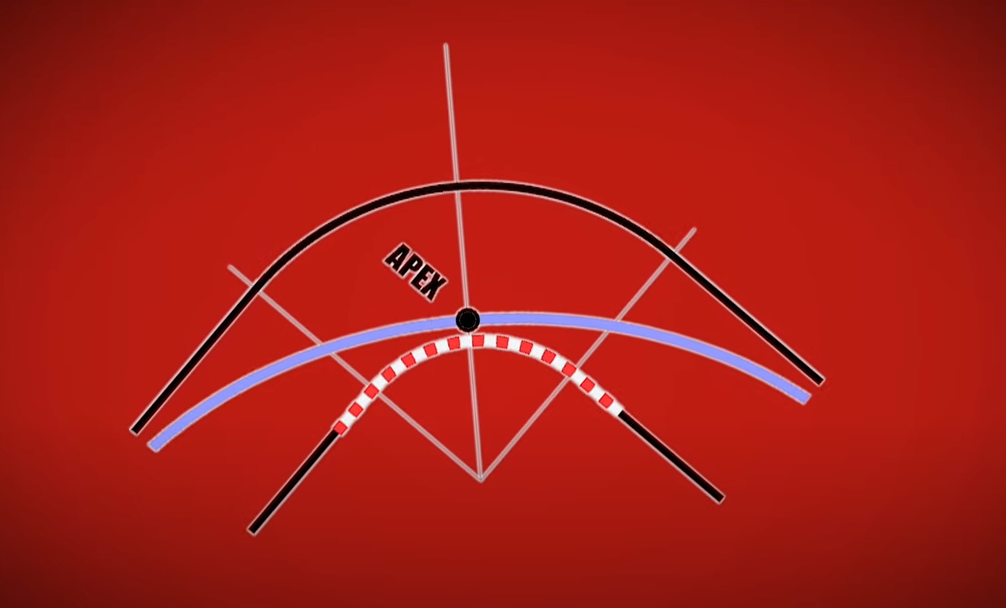
The Future of Apex Strategies in Racing & Sim Racing: AI, Adaptation, and the Changing Science of Cornering
Introduction: Why the Apex Matters More Than Ever
In motorsports, hitting the perfect apex is one of the most critical aspects of racecraft and lap time optimization. Whether it’s Formula 1, NASCAR, rally racing, or sim racing, understanding apex selection—the point where a car reaches the innermost part of a corner—is essential for maintaining speed and control.
Traditionally, racers have categorized three main types of apexes:
- Early Apex – Helps with entry speed but risks sacrificing exit speed and stability.
- Middle Apex (Geometric Apex) – The shortest and most balanced line, commonly used in technical circuits.
- Late Apex – Prioritizes exit speed, crucial for overtaking and long straights.
However, with AI-driven telemetry, sim racing innovations, and hybrid strategies emerging, the traditional approach to apex selection is evolving faster than ever before. This article explores how modern racing technology, machine learning, and virtual simulation environments are challenging and redefining what we once thought was the “perfect” racing line.
1. The AI Revolution in Apex Selection: Are Drivers Still in Control?
One of the most significant advancements in motorsports is the introduction of AI-driven telemetry systems that analyze and predict optimal apex strategies in real time. Formula 1 teams, including Mercedes-AMG Petronas and Red Bull Racing, are already using AI-enhanced data models to calculate the best apex approach based on tire degradation, fuel load, and real-time track conditions (F1 Chronicle).
How AI is Changing Apex Strategies in Racing
- Machine Learning Analysis: AI can process thousands of laps worth of data and predict the optimal apex for different scenarios (Driver61).
- Dynamic Racing Lines: In real-time, AI can adjust an F1 driver’s racing line mid-race based on weather conditions or grip levels (Flow Racers).
- AI-Assisted Coaching: AI-powered driving simulators like iRacing and Assetto Corsa can now suggest personalized racing lines for individual drivers.
Key Insight: As AI continues to refine racing strategy, a crucial question emerges—will human intuition still play a role in apex selection, or will AI eventually replace driver decision-making entirely?
2. The Sim Racing Revolution: Are Virtual Racers Redefining Apex Techniques?
With the rise of professional sim racing leagues (F1 Esports, Gran Turismo Championships, iRacing Pro Series), sim racers are discovering and refining new racing lines that challenge traditional apex selection wisdom (SimRacing Corner). Unlike real-world drivers, sim racers can practice thousands of laps without physical consequences, allowing them to push boundaries that real drivers wouldn’t dare to explore.
How Sim Racers Are Challenging Apex Strategies
| Factor | Sim Racing (iRacing, ACC, Gran Turismo) | Real-World Racing (F1, NASCAR, Rally) |
|---|---|---|
| Apex Preference | Hyper-optimized late apex | Mid-apex for stability |
| Risk Tolerance | Maximal (no real-world crashes) | Moderate (crash risks, tire wear) |
| Adaptation Speed | AI-assisted live telemetry adjustments | Human reaction-based adaptation |
| Environmental Factors | Consistent track conditions | Changing grip, weather impact |
Case Study: Max Verstappen’s Sim Racing Influence
Formula 1 World Champion Max Verstappen, an avid sim racer, developed his late-apex aggressive turn-in style in virtual racing before applying it to F1 (RaceFans). His precision and risk-taking in sim racing have translated to dominant performances in wet and dry conditions alike.
Key Question: Will future F1 and NASCAR drivers train primarily in sim racing environments before stepping into real cars? Could sim racers with no real-world experience challenge traditional motorsport legends?
3. The Hybrid Apex Approach: Adaptive Racing for Maximum Performance
The next evolution of apex strategy isn’t about choosing early, middle, or late apex—it’s about real-time adaptation. Elite drivers and sim racers are now using a hybrid approach, dynamically adjusting their racing lines mid-corner based on:
✔ Tire degradation
✔ Fuel weight
✔ Opponent positioning
✔ Weather conditions
Example: Wet Racing & Adaptive Apex Selection
In wet conditions, traditional apexes are often too slippery due to rubber buildup becoming slick. Instead, experienced drivers like Lewis Hamilton use an alternative “wet line”, moving off the normal racing line to find better grip on unused track sections (Autosport).
AI & Telemetry in Wet Racing
- Real-time AI tire slip analysis detects the best grip zones (Rapid Racer).
- Future HUD-assisted racing helmets could provide live AI apex recommendations mid-race.
The New Big Questions for the Future of Racing
With AI, sim racing, and adaptive racing strategies evolving rapidly, the future of apex selection in motorsport is at a turning point.
- Will AI-optimized apex selection eventually replace human decision-making in motorsports?
- Can sim racers redefine racing strategies in the real world?
- Will adaptive apex strategies, powered by real-time data, become the standard for next-generation race cars?
- Will AI-coached sim racers dominate real-world championships in the future?
- How will F1 and NASCAR regulations evolve to ensure AI assistance doesn’t remove the human skill element?
Conclusion: The Future of Apex Strategies in Racing & Sim Racing
The apex in racing is no longer a fixed, singular concept—it’s an ever-evolving strategy shaped by real-time data, AI-assisted optimization, and the rise of sim racing innovations. While traditional racecraft still holds value, the drivers of the future will blend human intuition with machine precision to find new apexes and break old lap records.
Final Thought: The future of racing isn’t just about mastering the apex—it’s about redefining it entirely.
Click here to explore the best tools and tips for elevating your sim racing game and dominating the track!
